Description
Six class II to III whitewater play features adjacent to the River Walk. These features will provide boaters from the local area and general region with a place to hone their skills in a low consequence environment, and will provide a competition venue for advanced level boaters. Conceptual plan by Gary Lacey and the U.S. Army Corps of Engineers.
____________________________________________________________________________________________
Conceptual Design
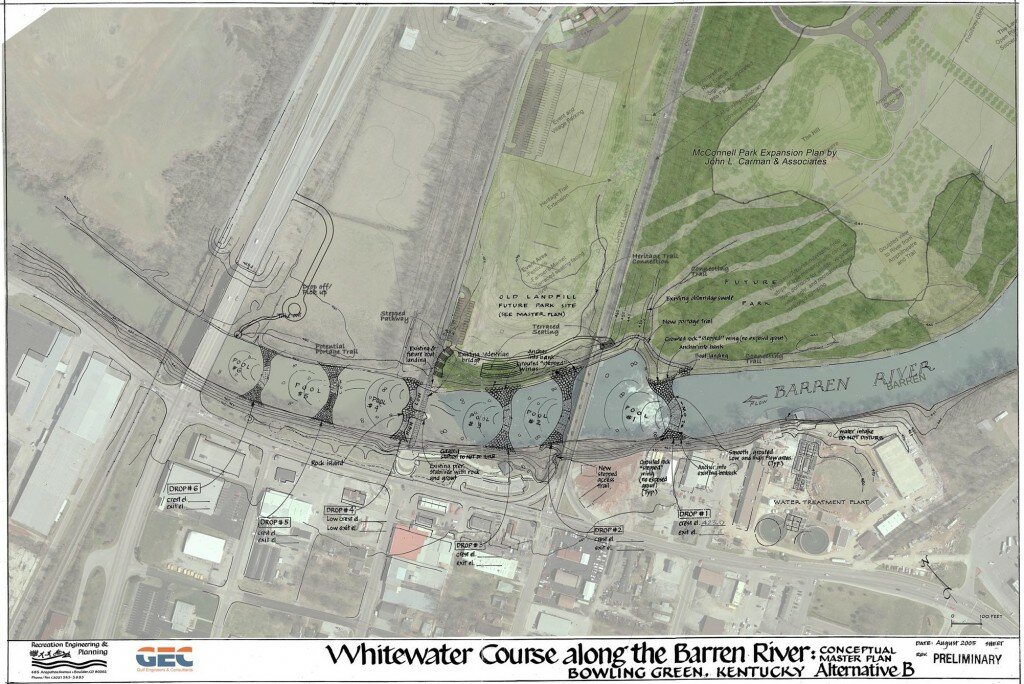 ____________________________________________________________________________________________
____________________________________________________________________________________________
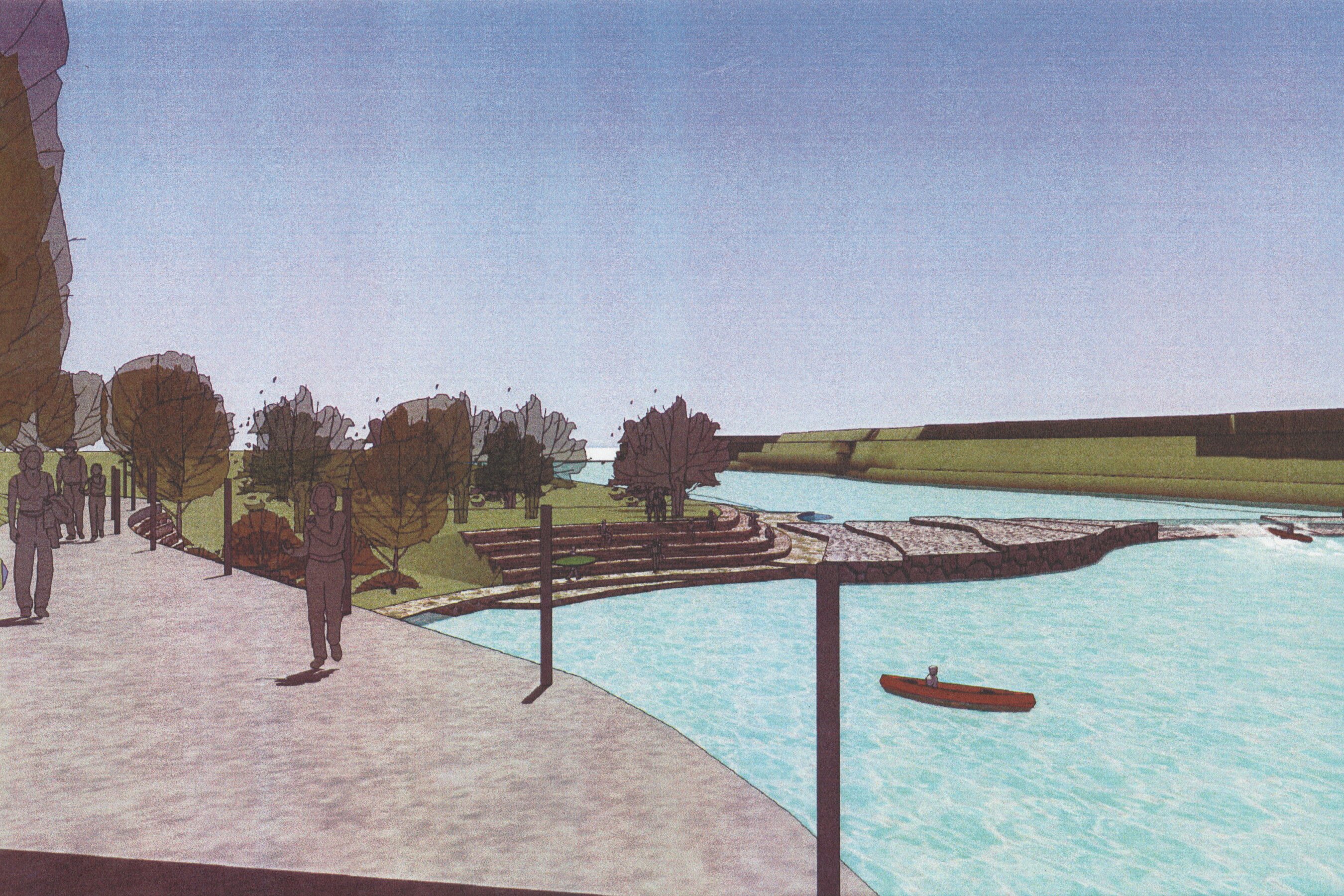 Economic Impact
Economic Impact
According to the Recreational Engineering and Planning Conceptual Master Plan Whitewater Course created by Gary Lacey, “Economic impact studies show that whitewater parks in these towns have brought between one and two million dollars a year into the local economy. Bowling Green, which is located in a region that is relatively devoid of whitewater boating stands to be a tremendous attraction to boaters who would otherwise have to travel great distances for reliable boating and large competitions.”
____________________________________________________________________________________________
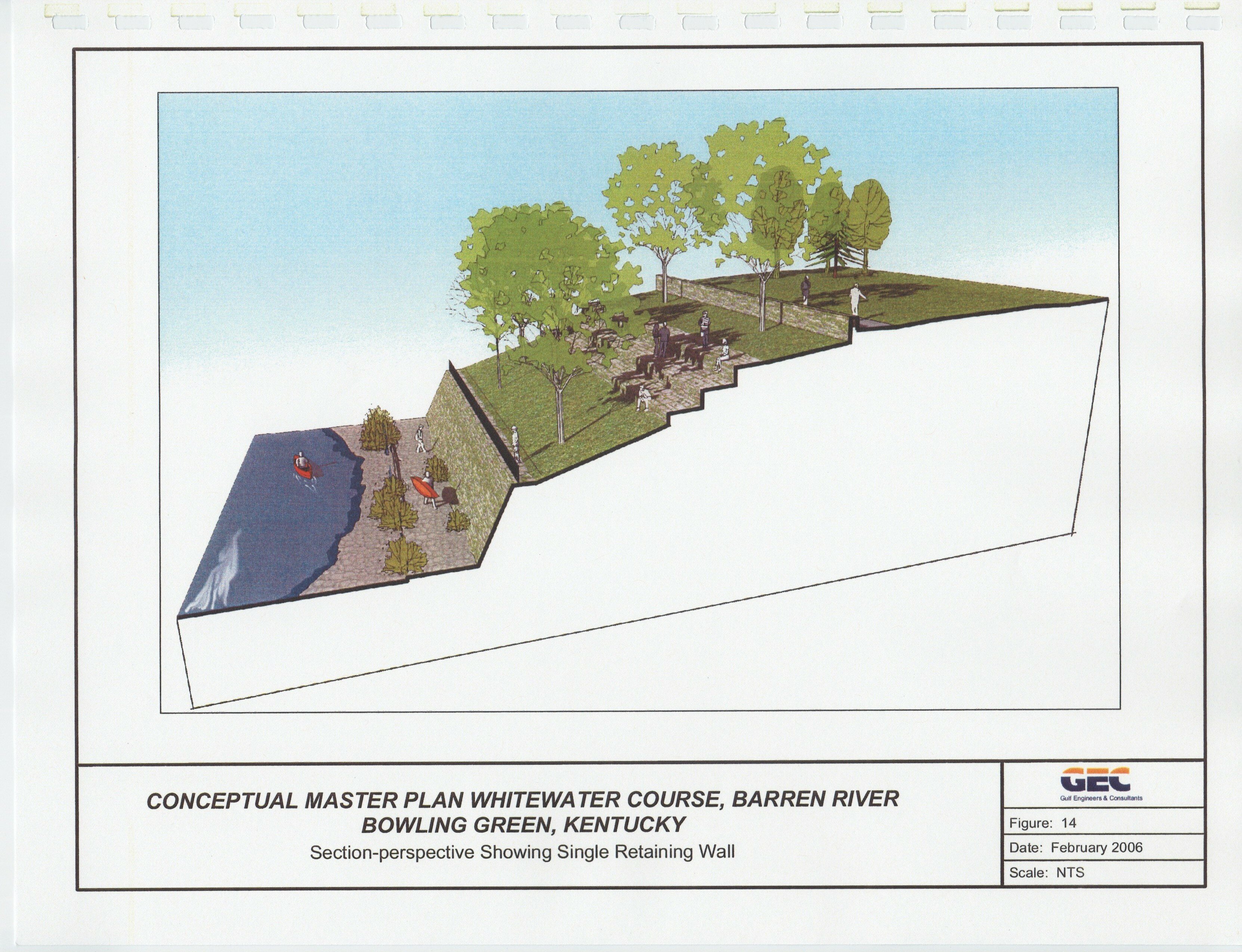 Conceptual Cost Estimate
Conceptual Cost Estimate
Prices based on GEC Conceptual Master Plan cost estimates plus inflation of 13.9% between 2006 – 2013
Whitewater Course Construction Subtotal: $3,255,447.21
Land Features: $835,995.91
Contingency: $1,022,860.78
Planning Permitting, and inspection: $610,384,.36
Total Conceptual Cost Estimate: $5, 724,688.25
________________________________________________________________________________________________
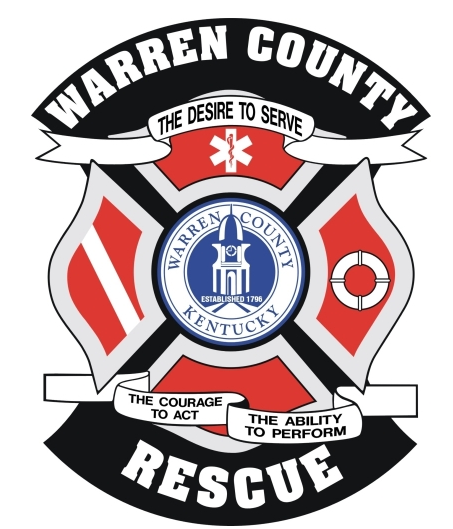
Swift Water Rescue Training
On June 2nd2011 BGRF President Paul Ress met with the Warren County Rescue Department to discuss the BROC conceptual plans. WC Rescue endorsed the BROC and is excited about utilizing the future whitewater course for swift water rescue training.
____________________________________________________________________________________________
 Fortified City Water Supply
Fortified City Water Supply
The current BGMU rubble dam at the park site creates a small reservoir that serves as the City of Bowling Green’s water in-take source. This rubble dam requires maintenance due to flooding every few years to maintain an adequate water level for water in-take. Whitewater Courses are constructed of large rocks that are cemented together that are resistant to shifting during periods of high water resulting in a long-term solution to maintaining the City’s water in-take reservoir.
____________________________________________________________________________________________
Bridge Pier Preservation
The BGMU dam is creates river currents that are undermining the piers of the Old Louisville Road bridge. Construction of the six dams that make up the whitewater course will direct the river currents away from the bridge piers and reinforce the river bank.
____________________________________________________________________________________________
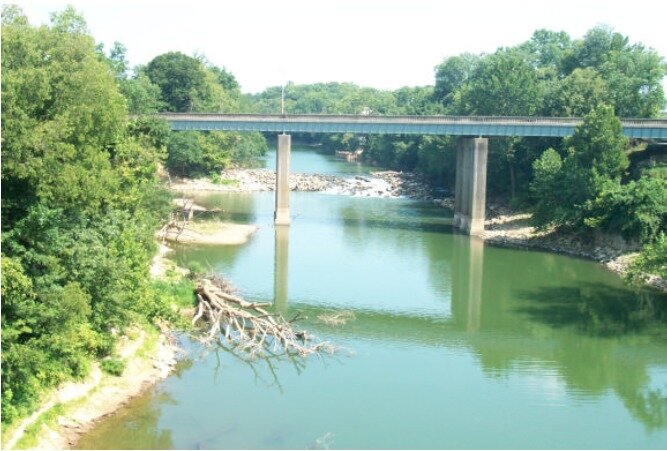 Improved Safety & Habitat
Improved Safety & Habitat
Current river bed conditions at the Whitewater Course site are poor. The BGMU rubble dam is a twelve foot tall river hazard full of sharp rocks and rebar. This poses a safety hazard to river users, a barrier to fish migration, and it is severely scouring the nearby river bank and Old Louisville Rd Bridge. The Whitewater Course Conceptual Plan calls for four drops that are approximately two feet tall to gradually carry the Barren River down it’s natural gradient in a relatively safe way for river users while enhancing fish habitat.
____________________________________________________________________________________________